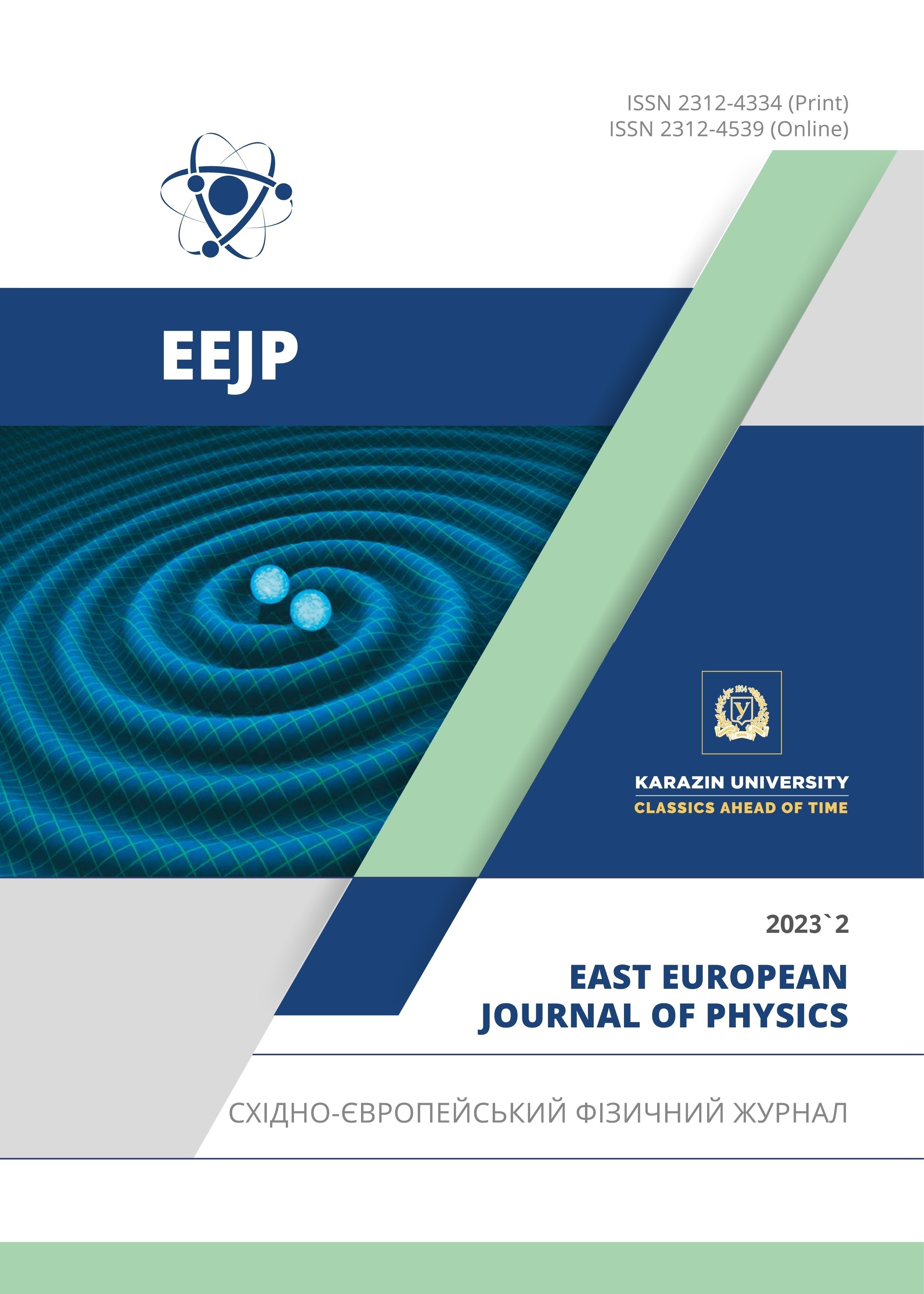Theoretical Description of even- even Platinum Pt-186 nucleus using IBM and (VMI) Models
Abstract
The aim of this study, is to investigate, in a phenomenological way, the backbending effect in platinum Pt-186 nucleus, in order to get a good description of the bends by using new parameters. VMI model and interacting boson model IBM-1 have been used to perform this research for a heavy mass nucleus (Z = 78). Energy ratios and arrangement of the bands show that the platinum Pt-186 have O(6)-SU(3) dynamical symmetry. Our current calculations gave results that are reasonably consistent with the most recent experimental data, especially the results calculated according to the VMI-model. Variable moment of inertia has been applied to describe successfully the effect of backbending in deformed even-even Pt-186 nucleus. Backbending was observed in the ground and β-bands, due to the change of the moment of inertia but not for (γ1, γ2 bands, because no changing in the moment of inertia.
Downloads
References
W. Meyerhof, Elements of Nuclear Physics, (McGraw-Hill, New York, 1967). pp. 288.
A. Arima, and F. Iachello, Phys. Rev. Lett. 35, 1069 (1975). https://doi.org/10.1103/PhysRevLett.35.1069
A. Arima, and F. Iachello, Ann. Phys. 111, 201 (1978). https://doi.org/10.1016/0003-4916(78)90228-2
M. Ploszajczak et al, J. Phys. G: Nucl. Phys. 8, 709 (1982). https://doi.org/10.1088/0305-4616/8/5/012
E. Grosse, F.S. Stephens, and R.M. Diamond, Phys. Rev. Lett. 31, 840 (1973). https://doi.org/10.1103/PhysRevLett.31.840
W.E. Burcham, Elements of Nuclear Physics, (Longman Inc., New York, 1989).
K. Krane, Introductory Nuclear Physics, (John Wiley and Sons, New York, 1987).
B.R. Mottelson, and J.G. Valatin, Phys. Rev. Lett. 5, 511 (1960). https://doi.org/10.1103/PhysRevLett.5.511
A. Faessler, Collective description of deformed and transitional nuclei, in: Nuclear Spectroscopy. Lecture Notes in Physics, vol. 119, edited by G.F. Bertsch, and D. Kurath, (Springer, Berlin, Heidelberg, 1980). pp. 97–139. https://doi.org/10.1007/3-540-09970-0_4
P.H. Regan, C.W. Beausang, R.F. Zamfir, R.F. Casten, J. Zhang, A.D. Yamamoto, M.A. Caprio, et al., Phys. Rev. Letters, 90, 1525021-4 (2003). https://doi.org/10.1103/PhysRevLett.90.152502
N. Ashok, and A. Joseph, “A systematic study of the ground state properties of W, Os and Pt isotopes using HFB theory,” International Journal of Modern Physics E, 28(10), 1950093 (2019). https://doi.org/10.1142/S0218301319500939
M. Khalil, A.M. Khalaf, M. Kotb, and M.D. Okasha, “Properties of platinum isotopes in framework of particle rotor model and IBM,” Nuclear Physics A, 991, 121610 (2019). https://doi.org/10.1016/j.nuclphysa.2019.121610
S.H. Al-Fahdawi, and A.K. Aobaid, “Studying the Nuclear Structure of the (Yb-172 ) Deformed Nucleus using (IBM-1) and (GVMI) Models,” Journal of Physics: Conference Series, IOP Conference Series Materials Science and Engineering, 1095, 012012 (2021). https://doi.org/10.1088/1757-899X/1095/1/012012
Copyright (c) 2023 Ali K. Aobaid

This work is licensed under a Creative Commons Attribution 4.0 International License.
Authors who publish with this journal agree to the following terms:
- Authors retain copyright and grant the journal right of first publication with the work simultaneously licensed under a Creative Commons Attribution License that allows others to share the work with an acknowledgment of the work's authorship and initial publication in this journal.
- Authors are able to enter into separate, additional contractual arrangements for the non-exclusive distribution of the journal's published version of the work (e.g., post it to an institutional repository or publish it in a book), with an acknowledgment of its initial publication in this journal.
- Authors are permitted and encouraged to post their work online (e.g., in institutional repositories or on their website) prior to and during the submission process, as it can lead to productive exchanges, as well as earlier and greater citation of published work (See The Effect of Open Access).








